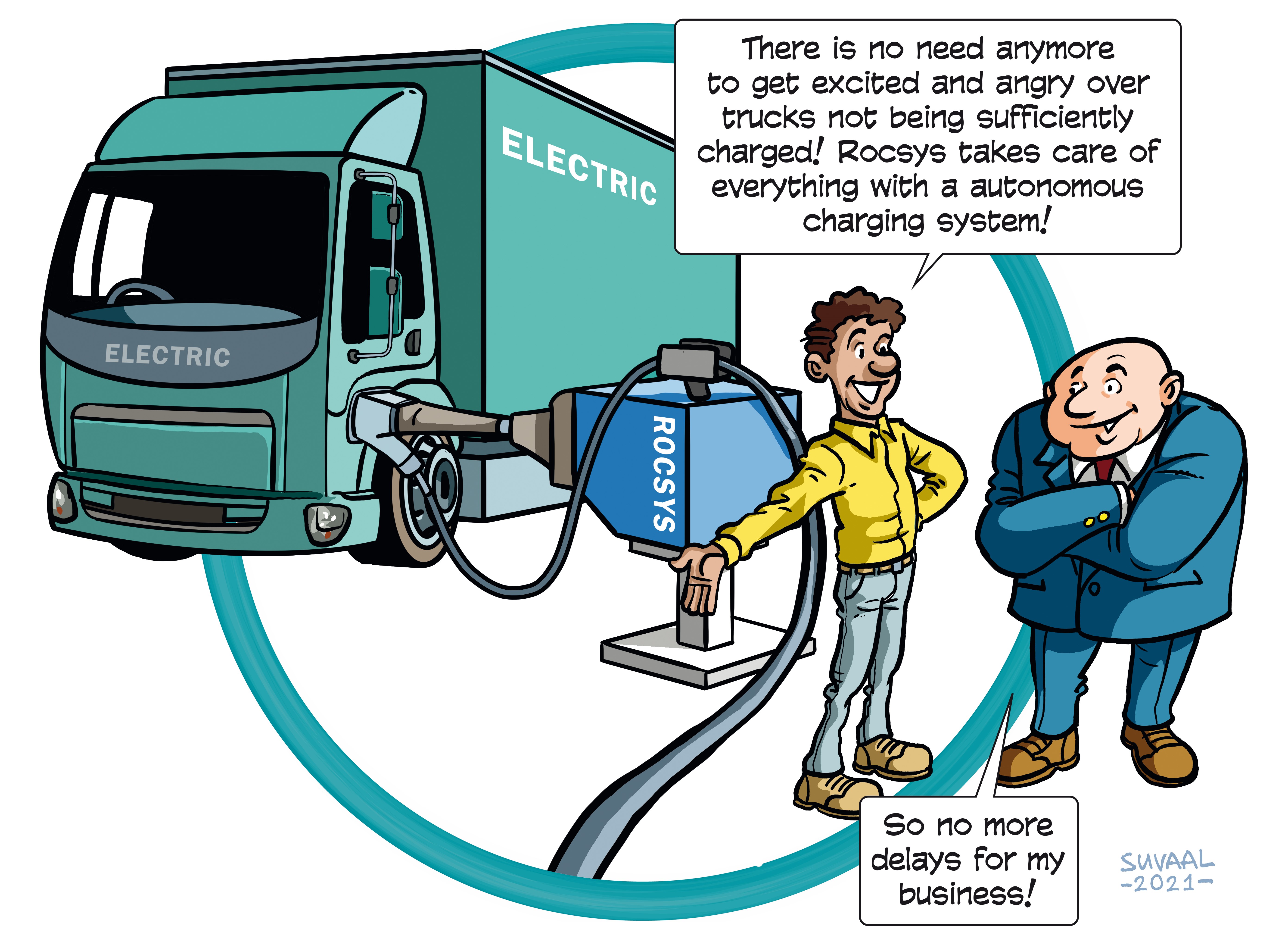Rocsys
Research Themes: Energy, Robotics, Software technology & intelligent systems


A TRL is a measure to indicate the matureness of a developing technology. When an innovative idea is discovered it is often not directly suitable for application. Usually such novel idea is subjected to further experimentation, testing and prototyping before it can be implemented. The image below shows how to read TRL’s to categorise the innovative ideas.
Summary of the project
Professional fleets are heavy mobility users and thus have a big environmental footprint. Fleet owners are experimenting with pilots to electrify their fleets. Although these pilots are positive, scaling to an entirely electric fleet is difficult logistically. Ensuring that vehicles are always charged sufficiently to run the business’ operations is the major bottleneck.
Connecting the vehicle to the charger is only a small act, but it comes with a huge responsibility. If the vehicles fail to charge, the entire schedule of the next day needs to be reworked. Moreover, when transitioning to autonomous vehicles, the necessity of someone to plug in the charger, makes the entire process reliant on humans once more.
Therefore, Rocsys (Robotic Charging Systems) came up with an autonomous charging system that relies on three technology pillars: soft robotics, computer vision and cloud connectivity. The process goes as follows. First, a trigger is given through a communication protocol to open the charge port cover. Then, the computer vision scans the environment to find the socket and lastly the soft robot navigates to the socket and plugs in, using tactile feedback to secure the connection. The soft robotics ensures robustness and safety when vehicles move e.g. while cargo is loaded, or when employees accidently bump into the robot. Through cloud connectivity, Rocsys integrates with planning software, which ensures all vehicles are charged sufficiently according to their schedule.
What's next?
The first commercial pilots have been completed and now Rocsys is mainly focusing on improving the algorithms that the computer vision uses to detect the socket, so it can deal with all kinds of weather conditions. This outdoor testing is necessary to build credibility about the reliability of the automatic charging system. Moreover, Rocsys is exploring solutions to allow multiple vehicles to make use of one charger, by automatically removing the charged vehicle. Lastly, it is preparing for broader use case scenarios, for example for autonomous driving in public spaces – where there is a higher unpredictability, lack of uniformity in vehicles and more safety concerns.
Contribution to the Energy transition?
Rocsys enables fleet owners to adopt electric transport on a large scale, with the reliability and robustness that is required for a professional fleet.
